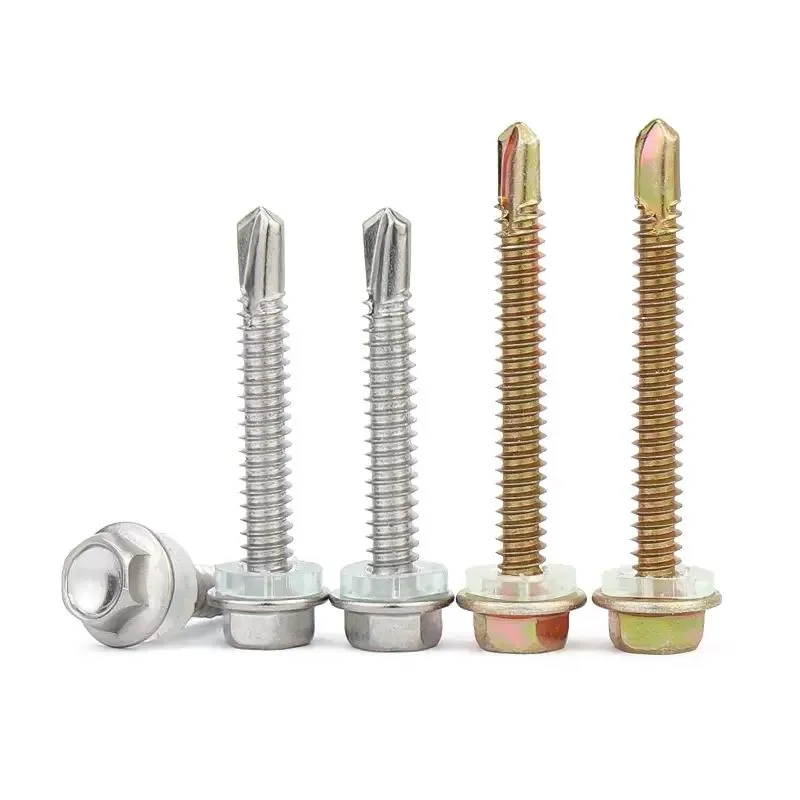

Hex Head Screw with Tapping Features for Enhanced Fastening Solutions
Oct . 11, 2024 11:28 Back to list
Hex Head Screw with Tapping Features for Enhanced Fastening Solutions
Understanding Hex Head Tapping Screws A Comprehensive Overview
Hex head tapping screws, often referred to simply as tapping screws, are a versatile fastener type used widely in various industries, from construction to electronics. Their unique design and functionality make them invaluable in situations where traditional screws may lack efficacy. In this article, we will delve into the characteristics, applications, advantages, and best practices associated with hex head tapping screws.
What Are Hex Head Tapping Screws?
Hex head tapping screws are screws that feature a hexagonal head, allowing for easy tightening using a wrench or socket. This design enables higher torque application compared to slotted or Phillips head screws. They are specifically designed to create their own thread as they are driven into a material. This is achieved through a sharp point and a threaded shaft, which can cut into various substrates without requiring a pre-drilled hole. Such features not only save installation time but also provide a strong hold in the material being fastened.
These screws are typically made from materials like stainless steel, carbon steel, or alloy steel, offering a range of tensile strengths and resistance to corrosion. They are available in different coatings, such as zinc plating, to enhance their durability and resistance to environmental factors.
Applications of Hex Head Tapping Screws
Hex head tapping screws find utility across numerous applications. Commonly, they are applied in
1. Metal Fabrication In metalworking and fabrication industries, these screws are used to join sheets of metal together, providing robust connections that can withstand the rigors of operational stress.
2. Woodworking While they are primarily designed for metal, tapping screws can also be used in woodworking, especially when fastening metal brackets or components to wooden frames.
3. Electrical Enclosures The electronics industry often employs tapping screws to secure electrical boxes and enclosures, as they can penetrate thicker materials without damaging delicate components.
4. Automotive In automotive manufacturing and repairs, these screws are favored for their strength and ability to resist loosening under vibration — a common issue in automotive applications.
hex head tapping screw

Advantages of Hex Head Tapping Screws
One of the primary advantages of hex head tapping screws is their ability to self-tap into materials, which eliminates the need for pre-drilling holes. This feature not only reduces installation time but also allows for greater versatility in various applications.
Additionally, the hexagonal head design allows for better torque application, making it easier to achieve the necessary tightness without the risk of cam-out, a problem often encountered with traditional screw head designs. The variety of materials and coatings available also means that these screws can be selected based on the specific environmental conditions they will face, such as moisture or corrosive elements.
Best Practices for Using Hex Head Tapping Screws
To ensure optimal performance when using hex head tapping screws, consider the following best practices
1. Select the Right Size and Material Choose screws that match the thickness of the material being fastened and are made from appropriate materials for the specific application.
2. Pre-Drill for Harder Materials While tapping screws are designed to cut their own thread, pre-drilling smaller pilot holes in harder materials can enhance performance and reduce stress on the screw.
3. Use the Correct Tools Employ the appropriate hex tool (wrench or socket) to ensure even torque distribution and to prevent stripping the screw head.
4. Check for Compatibility Ensure that the screw’s design is compatible with the materials being joined to avoid issues like splitting or inadequate fastening.
5. Regular Inspection For applications where screws are subjected to vibration or movement, regular inspection should be performed to ensure they remain secure over time.
Conclusion
Hex head tapping screws represent a crucial component across many sectors, providing an effective, efficient, and reliable fastening solution. Their unique design allows for versatility and strength in various applications, making them a favorite choice for professionals in multiple fields. By understanding their characteristics and adhering to best practices, users can leverage the full benefits of hex head tapping screws in their projects.
Latest news
-
Hot Dip Galvanized Bolts-About LongZe|High Strength, Corrosion Resistance
NewsJul.30,2025
-
High-Strength Hot Dip Galvanized Bolts - Hebei Longze | Corrosion Resistance, Customization
NewsJul.30,2025
-
Hot Dip Galvanized Bolts-Hebei Longze|Corrosion Resistance&High Strength
NewsJul.30,2025
-
High-Strength Hot-Dip Galvanized Bolts-Hebei Longze|Corrosion Resistance&High Strength
NewsJul.30,2025
-
Hot Dip Galvanized Bolts-Hebei Longze|Corrosion Resistance&High Strength
NewsJul.30,2025
-
Hot Dip Galvanized Bolts - Hebei Longze | Corrosion Resistance, High Strength
NewsJul.30,2025

